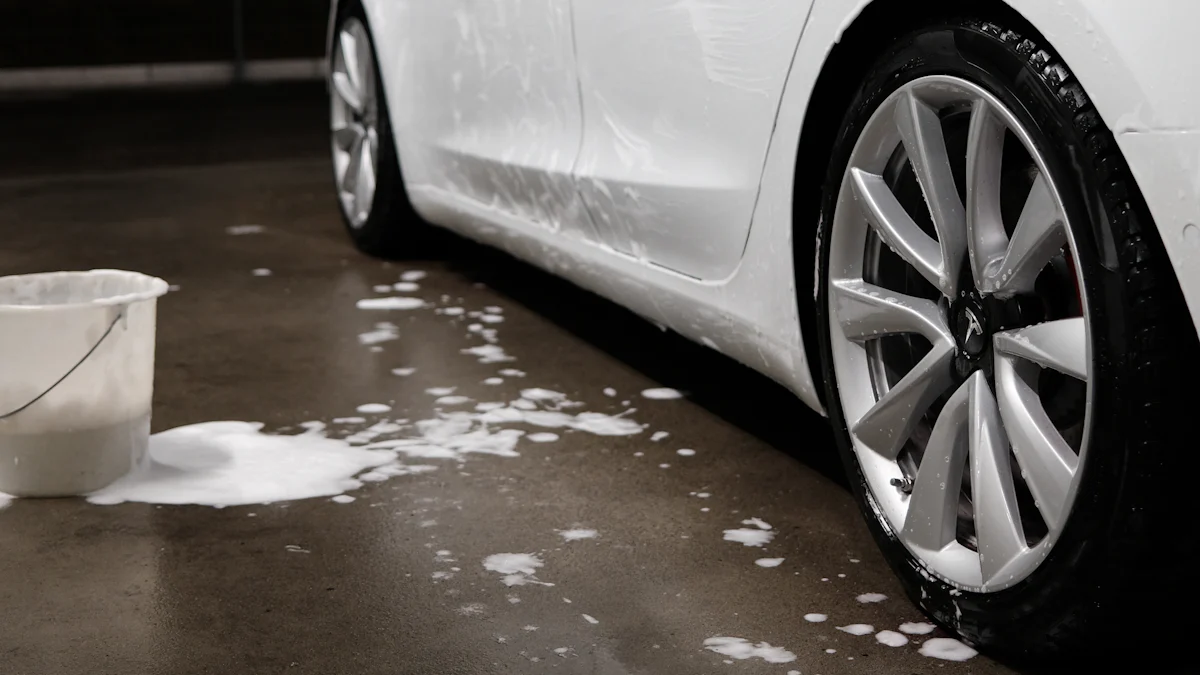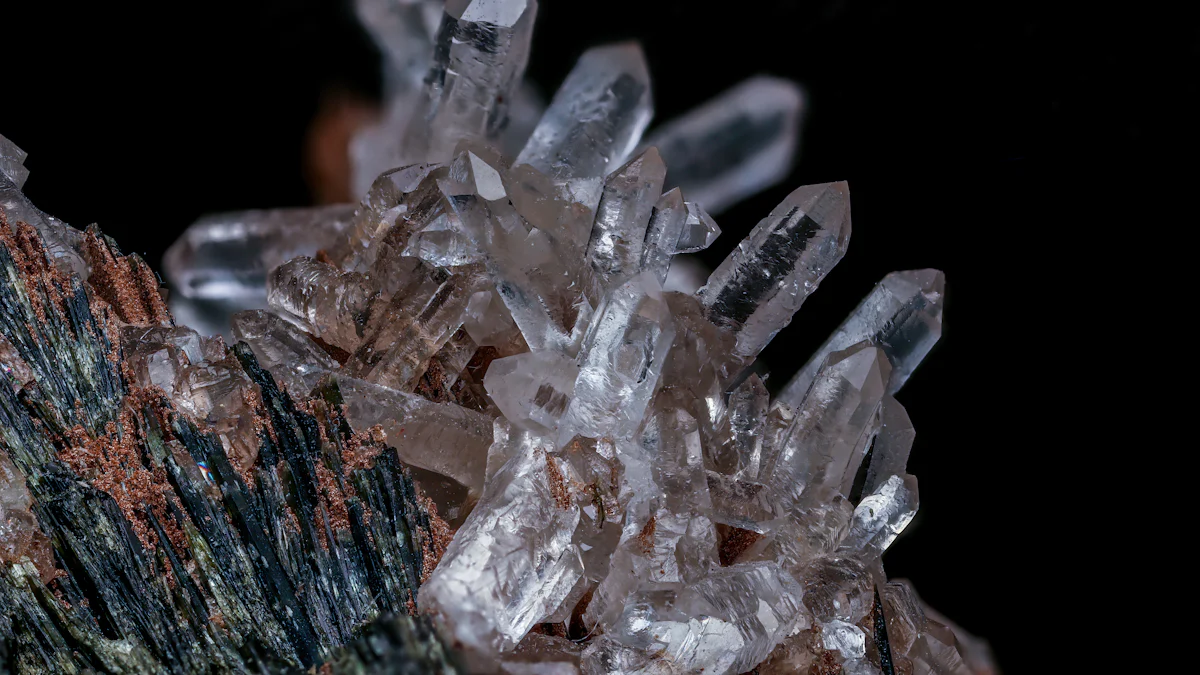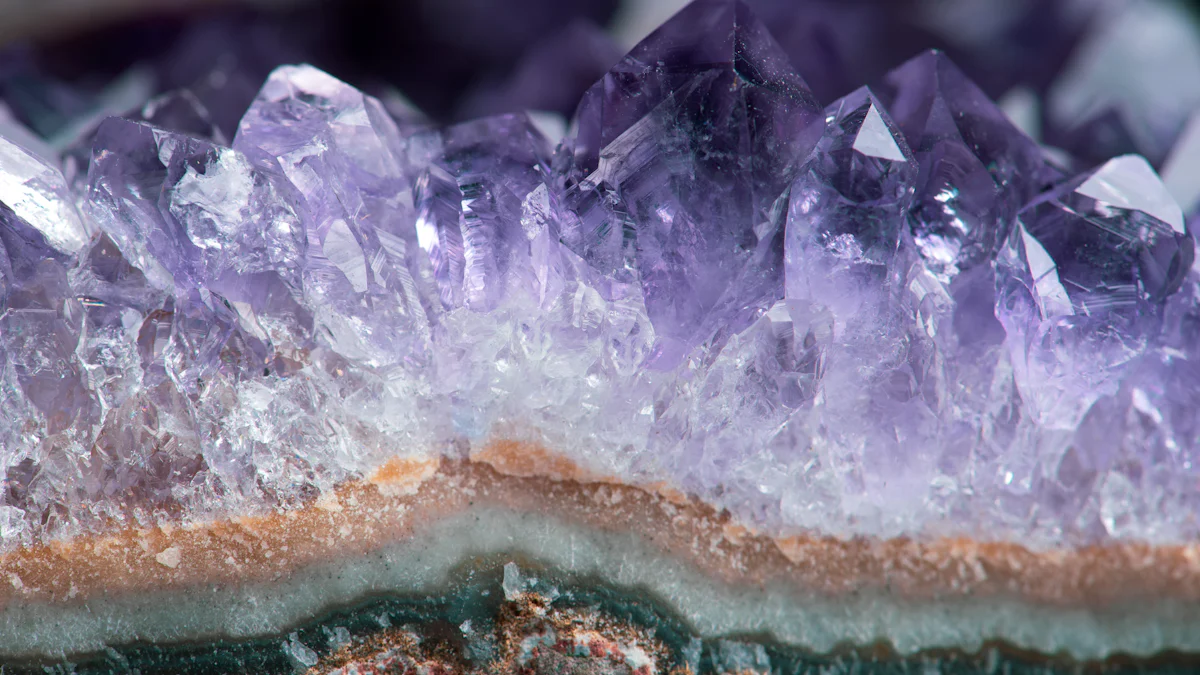
SiO2 coating, also known as silicon dioxide coating, offers a revolutionary way to protect surfaces. It forms a durable, hydrophobic layer that chemically bonds with materials, enhancing their resistance to wear, scratches, and environmental damage. This advanced technology, often compared to silicon carbide ceramic coating, stands out for its self-healing properties and water-repellent nature. When considering silicon carbide ceramic coating vs ceramic coating, the former provides superior durability and performance. Industries like automotive, electronics, and construction rely on SiO2 coatings and silicon carbide coatings for their exceptional performance. Additionally, many wonder, is silicon carbide a ceramic? The answer is yes, and its unique properties make it an excellent choice for various applications. Unlike traditional methods, SiO2 coating reduces maintenance efforts while extending the lifespan of surfaces, making it a preferred choice for long-term protection.
Key Takeaways
- SiO2 coating provides exceptional surface protection against scratches, UV rays, and chemical damage, making it a superior choice for maintaining the integrity of various materials.
- The hydrophobic properties of SiO2 coating ensure that water and dirt bead up and roll off, significantly reducing cleaning time and effort.
- With its long-lasting durability, SiO2 coating minimizes maintenance costs and extends the lifespan of surfaces, making it a cost-effective investment.
- SiO2 coating is versatile and can be applied to a wide range of surfaces, including automotive paint, glass, and construction materials, enhancing their performance and appearance.
- Regular maintenance, including the use of pH-neutral cleaners and timely reapplication, is essential to preserve the coating’s effectiveness and protect the underlying surface.
- Utilizing nanotechnology, SiO2 coatings achieve a uniform application that fills microscopic imperfections, resulting in a smooth and flawless finish.
- SiO2 coatings are environmentally friendly, reducing the need for harsh cleaning chemicals and minimizing waste through their durability.
How SiO2 Coating Works

Composition of SiO2 Coating
SiO2 coating, derived from silicon dioxide, forms the foundation of advanced surface protection. Silicon dioxide, a naturally occurring compound found in quartz, undergoes refinement to create a liquid polymer. This polymer serves as the base material for the coating. Once applied, it transforms into a solid, transparent layer that adheres to surfaces. The unique chemical structure of SiO2 enables it to bond at a molecular level, ensuring durability and resistance.
The composition often includes additional elements to enhance performance. For instance, titanium dioxide (TiO2) is sometimes added to improve UV resistance and durability. These additives work synergistically with SiO2, creating a robust protective barrier. The result is a coating that not only shields surfaces but also enhances their aesthetic appeal by providing a glossy finish.
Mechanism of Action
How SiO2 Bonds with Surfaces to Create a Protective Layer
The bonding process of SiO2 coating relies on its chemical properties. When applied, the liquid polymer reacts with the surface at a molecular level. This reaction forms a covalent bond, integrating the coating into the material rather than merely sitting on top of it. This integration ensures that the coating becomes a permanent part of the surface, offering superior protection compared to traditional waxes or sealants.
The SiO2 layer creates a high surface tension, which contributes to its hydrophobic properties. Water, dirt, and other contaminants struggle to adhere to the coated surface. Instead, they bead up and roll off, leaving the surface clean and protected. This self-cleaning effect reduces maintenance efforts significantly.
The Role of Nanotechnology in Enhancing SiO2 Coating Performance
Nanotechnology plays a pivotal role in the effectiveness of SiO2 coatings. By manipulating materials at the nanoscale, manufacturers can achieve a uniform and precise application. This precision ensures that every part of the surface receives equal protection. Nanoparticles within the coating fill microscopic imperfections, creating a smooth and flawless finish.
Moreover, nanotechnology enhances the coating’s durability. The densely packed nanoparticles form a hard shell that resists scratches, UV rays, and chemical damage. This innovation extends the lifespan of the coating, making it a cost-effective solution for long-term surface protection.
Scientific Research Findings: Studies highlight the importance of SiO2 layers in various applications, such as wafer bonding and corrosion resistance. These findings underscore the reliability and versatility of SiO2 coatings in both industrial and personal use.
Key Benefits of SiO2 Coating
Superior Surface Protection
Resistance to scratches, UV rays, and chemical damage.
SiO2 coating provides unmatched surface protection. Unlike traditional waxes or sealants, it chemically bonds with the surface, creating a durable shield that resists scratches, UV rays, and chemical damage. This bond ensures that the coating becomes an integral part of the material, offering long-lasting defense against environmental hazards. For instance, UV rays can cause fading and deterioration over time, but SiO2 coating acts as a barrier, preserving the original appearance of the surface.
The coating also protects against chemical exposure, such as acidic rain or harsh cleaning agents, which can degrade untreated surfaces. Its resistance to scratches further enhances its value, especially in high-contact areas like car exteriors or electronic screens. This level of protection makes SiO2 coating a superior choice for maintaining the integrity and aesthetics of various surfaces.
Hydrophobic Properties
Water and dirt repellence for easier cleaning.
One of the standout features of SiO2 coating is its hydrophobic nature. The coating creates a high surface tension, causing water to bead up and roll off effortlessly. This property not only keeps surfaces dry but also prevents water spots and streaks from forming. Dirt and grime struggle to adhere to the coated surface, making cleaning a breeze.
For example, in the automotive industry, SiO2 coating ensures that rainwater and mud slide off car exteriors, reducing the need for frequent washing. Similarly, on glass surfaces, the hydrophobic effect maintains clarity by repelling water and dust. This self-cleaning capability saves time and effort while keeping surfaces looking pristine.
Long-Lasting Durability
Extended lifespan of surfaces and cost-effectiveness.
Durability is a defining characteristic of SiO2 coating. Its robust chemical structure ensures that the protective layer remains intact for years, even under challenging conditions. Unlike traditional waxes that require frequent reapplication, SiO2 coating offers a long-term solution, reducing maintenance costs and effort.
This extended lifespan translates to significant cost savings. By protecting surfaces from wear and tear, the coating minimizes the need for repairs or replacements. For instance, in construction, applying SiO2 coating to building materials like tiles or concrete enhances their durability, reducing maintenance expenses over time. Its cost-effectiveness, combined with superior performance, makes SiO2 coating an excellent investment for both personal and industrial applications.
Applications of SiO2 Coating

Automotive Industry
Protecting car paint, windshields, and enhancing gloss.
In the automotive industry, SiO2 coating has revolutionized surface protection. When applied to car exteriors, it forms a robust shield that defends against scratches, UV rays, and chemical damage. This coating not only preserves the original paint but also enhances its gloss, giving vehicles a showroom-like finish. Drivers often notice how their cars maintain a polished appearance even after exposure to harsh weather conditions.
Windshields also benefit significantly from SiO2 coating. The hydrophobic properties ensure that rainwater beads up and rolls off quickly, improving visibility during storms. Dirt and debris struggle to adhere, reducing the need for frequent cleaning. For car enthusiasts and professionals alike, this technology offers a practical and aesthetic solution to long-term vehicle maintenance.
Electronics and Glass
Anti-scratch coatings for screens and lenses.
SiO2 coating plays a critical role in protecting electronic devices and glass surfaces. Modern smartphones, tablets, and laptops rely on this advanced coating to prevent scratches on their screens. The coating creates a hard, transparent layer that resists daily wear and tear, ensuring devices remain functional and visually appealing.
Camera lenses and eyeglasses also benefit from SiO2 coating. It enhances clarity by repelling dust and fingerprints, making cleaning effortless. The durability of the coating ensures that these delicate surfaces remain protected over time. For industries producing high-end electronics or optical equipment, SiO2 coating has become an essential component of product design.
Construction and Industrial Use
Protecting building materials like concrete and tiles.
In construction, SiO2 coating provides a durable solution for protecting building materials. Concrete, tiles, and other surfaces treated with this coating gain resistance to water, stains, and environmental damage. This protection extends the lifespan of materials, reducing maintenance costs for property owners.
The coating also enhances energy efficiency in buildings. By creating a weather-resistant barrier, it prevents water entry and reduces air leakage. This feature proves particularly valuable in regions with extreme weather conditions. Additionally, the ease of application and multi-surface compatibility make SiO2 coating a versatile choice for industrial use. From factories to public infrastructure, its benefits are evident across various sectors.
Maintenance Tips for SiO2 Coating
Cleaning the Coated Surface
Use of pH-neutral cleaners and avoiding abrasive tools.
Maintaining the pristine condition of a surface treated with SiO2 coating begins with proper cleaning techniques. I always recommend using pH-neutral cleaners. These cleaners effectively remove dirt and grime without compromising the integrity of the coating. Harsh chemicals or acidic solutions can degrade the protective layer over time, so avoiding them is crucial.
When cleaning, I suggest steering clear of abrasive tools like steel wool or rough sponges. These tools can scratch the surface and weaken the coating’s durability. Instead, opt for soft microfiber cloths or non-abrasive sponges. These materials gently lift contaminants without causing damage. Regular washing, especially after exposure to environmental pollutants like bird droppings or tree sap, ensures the coating remains effective and visually appealing.
Pro Tip: Rinse the surface thoroughly before applying any cleaner. This step removes loose debris and prevents scratching during the cleaning process.
Reapplication and Longevity
Signs that reapplication is needed and how to maintain effectiveness.
Even with proper care, SiO2 coatings require periodic reapplication to maintain their effectiveness. Based on my experience, I recommend inspecting the surface every six to twelve months. Look for signs like reduced water beading or a dull appearance. These indicators suggest that the coating’s hydrophobic and protective properties may have diminished.
Reapplying the coating restores its performance and extends the lifespan of the treated surface. Before reapplication, ensure the surface is thoroughly cleaned and free of contaminants. This preparation allows the new layer to bond effectively. For best results, follow the manufacturer’s guidelines or consult a professional.
Regular maintenance also includes periodic decontamination. Over time, contaminants like iron particles or tar can embed themselves into the coating. Using specialized decontamination products removes these impurities and rejuvenates the coating’s performance.
Key Takeaway: Consistent maintenance and timely reapplication not only preserve the coating’s benefits but also enhance the longevity of the underlying surface.
SiO2 coating offers a reliable and versatile solution for protecting surfaces from damage, wear, and environmental factors. Its hydrophobic properties ensure water and dirt repellence, while its durability provides long-lasting protection against UV rays, chemicals, and physical abrasion. These qualities make it an excellent investment for both personal and industrial applications. By understanding its mechanism and following proper maintenance practices, I believe you can maximize its benefits. This advanced technology not only preserves the appearance of surfaces but also extends their lifespan, making it a practical and cost-effective choice.
FAQ
How do SiO2 coatings work?
SiO2 coatings create a durable, protective layer on surfaces. When applied, the coating chemically bonds with the material, forming a hard shell that resists UV radiation, chemical exposure, and physical abrasion. Its hydrophobic properties repel water and dirt, ensuring surfaces stay cleaner for longer. This combination of protection and ease of maintenance makes SiO2 coatings highly effective.
What are the benefits of SiO2 coatings?
SiO2 coatings offer several advantages. They provide superior protection against environmental hazards like UV rays, contaminants, and scratches. Their hydrophobic nature simplifies cleaning by repelling water and dirt. Additionally, these coatings enhance surface longevity, reducing the need for frequent maintenance or replacements. For anyone seeking long-term surface care, SiO2 coatings deliver exceptional value.
Can SiO2 coatings be applied to any surface?
SiO2 coatings work on a variety of surfaces, including automotive paint, glass, ceramics, and even building materials like concrete and tiles. However, the surface must be clean and free of contaminants before application. I recommend consulting the product guidelines to ensure compatibility with specific materials.
How long does an SiO2 coating last?
The lifespan of an SiO2 coating depends on factors like application quality, environmental exposure, and maintenance. On average, a well-applied coating can last several years. Regular cleaning with pH-neutral products and timely reapplication extend its effectiveness. Proper care ensures the coating continues to protect and enhance surfaces over time.
Is SiO2 coating the same as ceramic coating?
Yes, SiO2 coating is often referred to as ceramic coating. Both terms describe a liquid polymer derived from silicon dioxide that forms a protective layer on surfaces. While some ceramic coatings may include additives like titanium dioxide for enhanced performance, the core technology remains the same. This innovation provides robust protection and a glossy finish.
Does SiO2 coating require professional application?
While professional application ensures optimal results, many SiO2 coatings are designed for DIY use. These products often come with detailed instructions for easy application. However, achieving a flawless finish requires careful preparation, such as cleaning and decontaminating the surface. For complex surfaces or high-value items, I suggest seeking professional assistance.
How do I maintain an SiO2-coated surface?
Maintaining an SiO2-coated surface involves regular cleaning with pH-neutral cleaners. Avoid abrasive tools that could damage the coating. Periodic decontamination removes embedded impurities, restoring the coating’s performance. Inspect the surface every six to twelve months for signs of wear, and reapply the coating as needed to maintain its protective properties.
Can SiO2 coatings prevent scratches?
SiO2 coatings provide a high level of scratch resistance by forming a hard, protective layer. While they minimize minor scratches and abrasions, they cannot completely prevent deep or severe damage. For maximum protection, I recommend combining the coating with other protective measures, such as careful handling and avoiding abrasive contact.
Are SiO2 coatings environmentally friendly?
SiO2 coatings are considered environmentally friendly compared to traditional waxes and sealants. Their durability reduces the frequency of reapplication, minimizing waste. Additionally, their hydrophobic properties reduce the need for harsh cleaning chemicals, promoting eco-friendly maintenance practices. This makes them a sustainable choice for surface protection.
What makes SiO2 coatings cost-effective?
SiO2 coatings save money in the long run by reducing maintenance costs and extending the lifespan of surfaces. Their durability minimizes the need for frequent reapplications or repairs. For example, applying SiO2 coating to a car protects its paint and reduces the need for polishing or repainting. This cost-effectiveness, combined with superior performance, makes SiO2 coatings a smart investment.